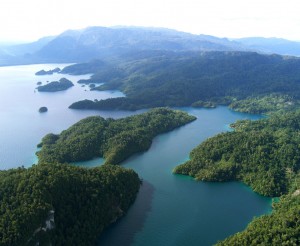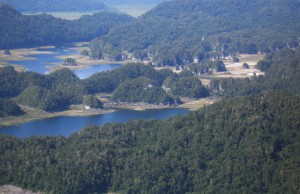
General view of Lengguru
© Vivien Bailly
Lengguru remains one of the last unexplored territories on the planet. Covering an area similar to Sardinia, this vast mountainous mass is located at the heart of a mysterious, isolated and difficult to reach region, in the western Indonesian half of the Island of New-Guinea, on the hedge of the large Indo-Australian archipelago. This part of the island is mainly made of impressive karst masses such as Lengguru, covered with impenetrable, primary forests, and sheltering phenomenally abundant fauna and flora.
A ten million year-old mountainous mass
Lengguru rose from the sea a little more than ten million years ago following the collision of the Australian and Pacific tectonic plates. Located at the junction of three major bio-geographical regions – the Bird’s Head Peninsula and the Northern and Southern parts of the Island of New-Guinea, it consists of alternate mountainous wedges isolating numerous endhoreic valleys.
Find out more about the geological context of the Lengguru mass.
Unique ecosystems

Lake Lakamora
© Vivien Bailly
In the lower part of these valleys, karst form natural labyrinths scattered with huge networks of canyons, caves, underground galleries and fragmented rivers, sheltering a panel of very diversified ecosystems. Genuine “species producing plants”, the karst masses are populated by unique communities of birds, mammals, reptiles, fish and flora, most of them unknown.
Find out more about the original Lengguru ecosystems
The swift uplift of its mountainous arches, its favourable bio-geographical location, its stable climate, its plethora of ecosystems are as many factors of biodiversity, which makes Lengguru an exceptional place to study the species diversification processes.

